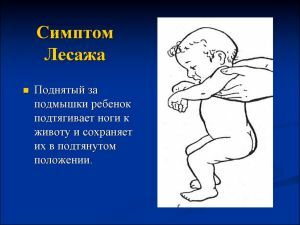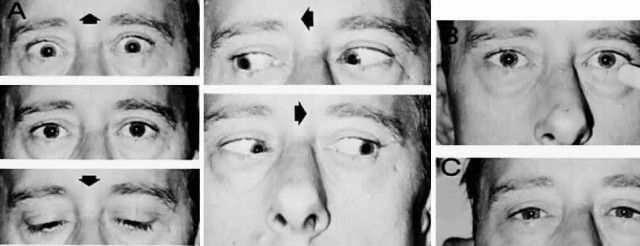 Apato-abulic syndrome( simplex) is a mental disorder of the emotional-volitional sphere, in which a person lacks emotionality, motivation, apathy to everything around him, as well as a complete decrease in vital activity. This disorder is accompanied by inactivity and slovenliness.
Apato-abulic syndrome( simplex) is a mental disorder of the emotional-volitional sphere, in which a person lacks emotionality, motivation, apathy to everything around him, as well as a complete decrease in vital activity. This disorder is accompanied by inactivity and slovenliness.
Pathology, as a rule, manifests itself in adolescence, but in some cases it can develop later in life. The main characteristic of the syndrome is emotional impoverishment. Changes that occur are not controlled by the person himself.
At the same time, people around you can not notice these changes for quite some time.
Provoking causes of
The following factors are the causes of Apato-abulic syndrome:
- other mental illnesses, most often the syndrome accompanies a disease such as schizophrenia ;

- lesions of the brain due to atrophy, tumors, head injuries, internal hemorrhages;
- slight forms of pathology can observe in people in the borderline state of and unable to withstand stressful situations;
- also recently, scientists argue that the syndrome can occur due to impaired hormone release - dopamine in the body of .
As practice shows, often simplex-syndrome occurs in schizophrenia and can develop within the framework of this pathology. It is interesting that in women schizophrenia occurs in the form of apato - abulic disorder, accompanied by hallucinatory delirium.
There are two types of loss and decrease in activity in patients with schizophrenia:
- lack of motivation and independence in the patient, retardation of reactions;
- stereotyped behavior and loss of ability to switch.
How does a person with a syndrome behave?
Pathological manifestations do not occur spontaneously, they are characterized by gradual progression. Very often, the family does not notice the changes that occur to a person until the last.
First, the first signs of a disorder can be seen only when the patient is at home. He is idle, aimlessly spends his time. The disease begins, primarily with a loss of interest in your favorite activities, entertainment, hobbies, socializing with friends and family.
A patient visits an educational institution or goes to work by inertia, rather unconsciously. In the future, he ceases to pay attention to this area.
All the manifestations that arise in the presence of pathology can be divided into groups:
- Emotional background .A person becomes completely indifferent to everything that surrounds him, he loses the ability of
 to empathize with other people, often becomes hostile, especially towards those with whom he had the closest contact - parents, close friends. The patient becomes alienated, strives for isolation, minimizes social contacts, does not enter into frank conversations.
to empathize with other people, often becomes hostile, especially towards those with whom he had the closest contact - parents, close friends. The patient becomes alienated, strives for isolation, minimizes social contacts, does not enter into frank conversations. - Physiological manifestations of .Facial facial expressions and vegetative reactions are absent, ie, the patient, for example, can not blush because of embarrassment, the glitter in the eyes disappears.
- Psychological violations of .In patients, there appears a tendency to affective actions, that is, to those actions that are difficult to explain logically, and which previously were not inherent in it. Moreover, such actions in an adequate person can sometimes cause real disgust. The patient loses shame, ceases to take care of themselves and observe the rules of personal hygiene. Also his speech changes very much, it becomes more simple, monosyllabic, a clear expression of thoughts is absent.
- Motorcycle .There are obsessive involuntary movements - compulsions, for example, tapping with your feet or hands, rocking your foot, coughing, rubbing your hands, laughing. If you address this patient directly, he will begin to look closely at his hands.
Professional Diagnostic Approach
For the accurate diagnosis, the doctor evaluates the patient's condition based on the following criteria:
- Complaints of .As a rule, the diagnosis in any disease begins with listening to the available complaints. However, in this
 case, this method will not be effective, because the patient will not complain about anything. This will reveal the difficulty in the formulation of their thoughts, the lack of concentration of attention.
case, this method will not be effective, because the patient will not complain about anything. This will reveal the difficulty in the formulation of their thoughts, the lack of concentration of attention. - Emotions of the .The patient becomes indifferent to absolutely all people without exception. There are signs of inadequate behavior.
- Features of the motor skills. There is a rough, and sometimes even a hostile look on his face, the patient focuses his attention on one point.
- Activity of .As the disorder progresses, the patient becomes more and more uninitialized and indifferent to events and everything that surrounds him. Occasionally there are bursts of energy, but they tend to last very briefly and pass as suddenly as they appeared.
- Aggression of .The patient very often shows aggression not only to close people, but also to strangers.
- Interests .The circle of interests of such a person is gradually narrowing more and more, and in the end is limited only to the reception of delicious food.
- Social connections .The patient tries as much as possible to retire, becomes alienated.
- Thinking .There is a decline in all functions of the intellectual sphere.
- Sexual orientation of the .The patient interrupts sexual relations, confined to masturbation, often behavior becomes shameful.
- Attitude to study and work activity .Over time, the patient shows less interest in these areas. If first time he visits classes or work, then in the future, for example, he can reach work, aimlessly hang around the building for hours.
- Relations with close people .Interest in any interpersonal contacts is completely absent. There are frequent attacks of aggression.
- Personal Hygiene .Gradually light untidiness develops into uncleanliness. The patient simply stops washing, does not follow his appearance, wears dirty clothes.

Assisting
 Therapy of this disorder is focused on eliminating symptoms and preventing the further development of pathology, which will progress over time without proper treatment.
Therapy of this disorder is focused on eliminating symptoms and preventing the further development of pathology, which will progress over time without proper treatment.
Treatment of Apato abulian syndrome is carried out in several ways:
- The main method is medication .Appointed drugs of the neuroleptic group, such as: Frenolone, Triftazin, Penfljuridol, Piracetam.
- Group psychotherapy , includes non-verbal methods, involving the patient in the discussion, establishing social contacts, returning lost communication skills. Very effective method of personal conversation to establish trust.
- Family therapy begins with the analysis of relationships within the family and the role of each family member separately. The purpose of this therapeutic method is to explain to the close relatives of the patient all aspects of his condition and their manifestations.
- Also an important point is the resolution of existing family conflicts and the establishment of harmonious and warm relations between people.
Often the disease is diagnosed already at the time of transition to a severe form. 
It is also important to know that patients with Apato - Abulian syndrome in the majority become prone to suicide.
Therefore, it is necessary to take timely measures to avoid irreparable.
After treatment the patient needs support from close people, psychological comfort and a favorable atmosphere in the family.
With timely treatment, you can achieve good results and complete recovery with a return to a full life, training and work.



